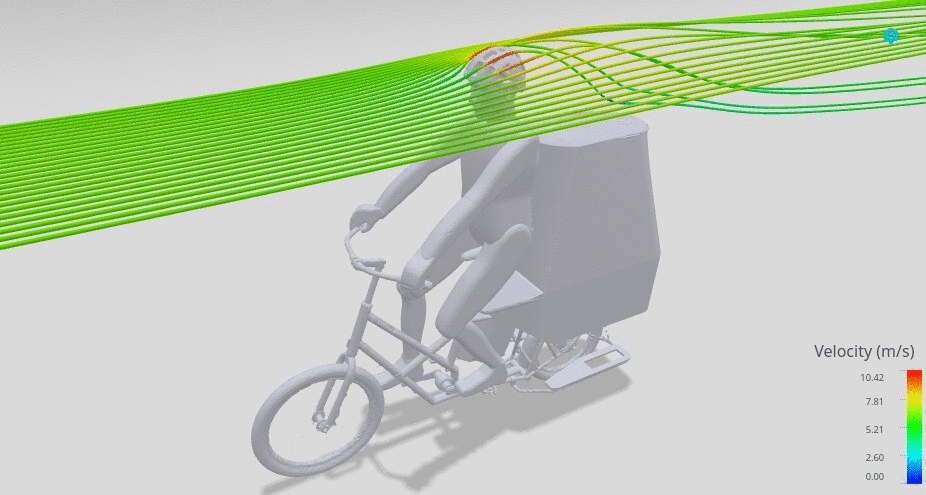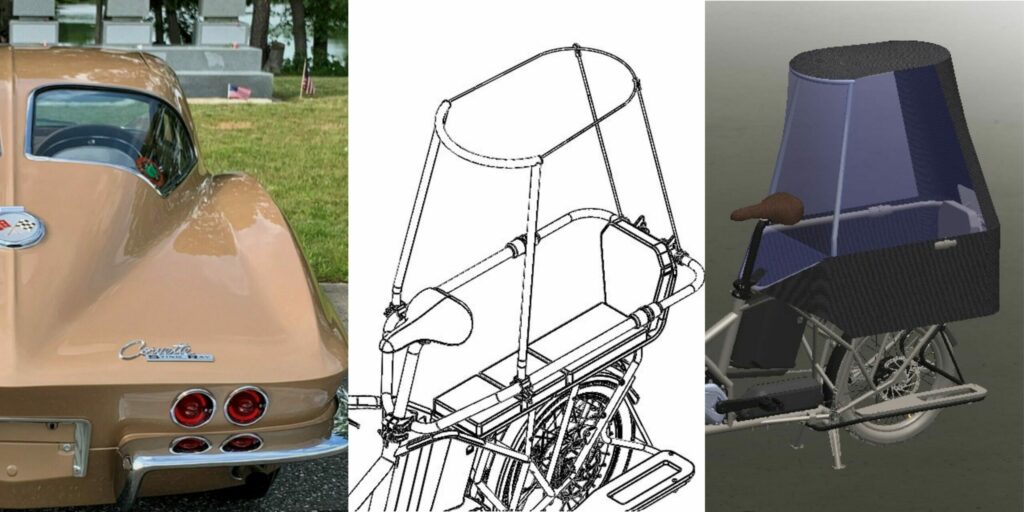Initially, a rain canopy was the accessory we put at the very end of our wishlist. We were reluctant to develop it for several reasons: it’s often unattractive on most long-tails, it’s heavy and cumbersome, it’s prone to the wind, and it can be difficult to maneuver. However, both customers and dealers urged us to develop this accessory. Feedback from our Bike43 Riders group and other customers indicated it was a critical addition—some even considered it a dealbreaker for purchasing the bike.
Setting the Goals
Given the strong demand, we decided to create a rain canopy that would stand out in terms of both functionality and aesthetics. Our goal was to design a product that would address the common issues seen with other canopies on the market. We created a detailed specification sheet to guide our development process:
- Aerodynamics: Users reported incidents of canopies causing bikes to fall sideways in strong winds. Our canopy needed to be stable in winds up to 25 km/h.
- Ergonomics: It had to be compatible with our pivotable bench kit, which presented several challenges:
- It should attach only to the bench bars and not the frame.
- It should accommodate the saddle.
- It should adapt to the modular size of the roller coaster bars.
- Waterproofing: It needed to protect kids fully, especially their legs.
- Ease of Installation: Customers wanted to install and remove the canopy without tools.
- Cycling Comfort: The canopy should not interfere with the rider’s cycling.
- Aesthetics: It needed to look good on the bike, which was a significant challenge.
Design & Solutions
Aerodynamics
To ensure stability in windy conditions, we designed a canopy that would slightly deform to accomodate wind gusts, avoiding any significant annoyance for passengers and instability during riding. The front of the canopy is rigid, while the back has more flexibility to cope with the wind. Using 3D design and computational fluid dynamics (CFD), we found that a rounded front end, inspired by airplane wing profiles, provides a strong leading edge without compromising passengers space. Interestingly, our calculations on AirShaper revealed that the bike’s aerodynamics improved by 3% with a rider on it. As usual, we, at Bike 43 come up with innovations and we have filed a patent to ensure that customers are not fooled by uneffective copycat products.

Ergonomics
For compatibility with the pivotable bench kit:
- Attachment: We used a clamp system to assemble the canopy to the bench bars, finding it rigid enough without needing additional frame attachments. Velcro straps were used for other attachment points.
- Seatpost Accommodation: A zipper in the canopy provided space for the seatpost when pivoted.
- Modular Size: Initially, we considered zippers to extend the canopy size, but this proved impractical. Instead, we designed the canopy with slack and skirt guards, which also protect children’s legs and extend for longer roller coaster bars.

Waterproofing
The skirt guards also ensured that kids remained fully protected from rain. We added a lateral strip to the zippers to prevent water infiltration, ensuring that no rain would reach the children inside.

Ease of Installation
The canopy was designed for easy installation and removal without tools. The attachment points with Velcro straps and the simple clamp system made this possible.

Cycling Comfort
We ensured that the highest point of the canopy would not interfere with the rider’s cycling path, maintaining both comfort and safety.

Aesthetics
We developed multiple 3D designs and incorporated customer feedback to make the canopy as visually pleasing as possible. We maximized window areas to reduce motion sickness by allowing passengers to view the landscape. Inspired by full glass car prototypes like the Ford GT40, we aimed for slim window jambs. Reflective white stripes were added to enhance visibility in low light conditions.

Conclusion
We are proud of our rain canopy design. It is functional, fully waterproof, and children love it. Despite our best efforts to improve the aesthetics, rain canopies on long-tails still appear somewhat protruding compared to those on front-loader cargo bikes. The biggest challenge was translating our 3D designs into a physical canopy, as our team is more experienced with metals and rigid materials rather than textiles.
Update (April 2024) . In the spirit of full transparency, we received feedback about unexpected breakage in the roof shaft of the canopy. The fiberglass rod diameter was too thick, leading to breakages. We have since adjusted the design and sent new rods to affected customers.
Through diligent design and customer feedback, we have developed a rain canopy that meets the needs of our users, enhancing the overall experience of riding our long-tail bikes in any weather.

